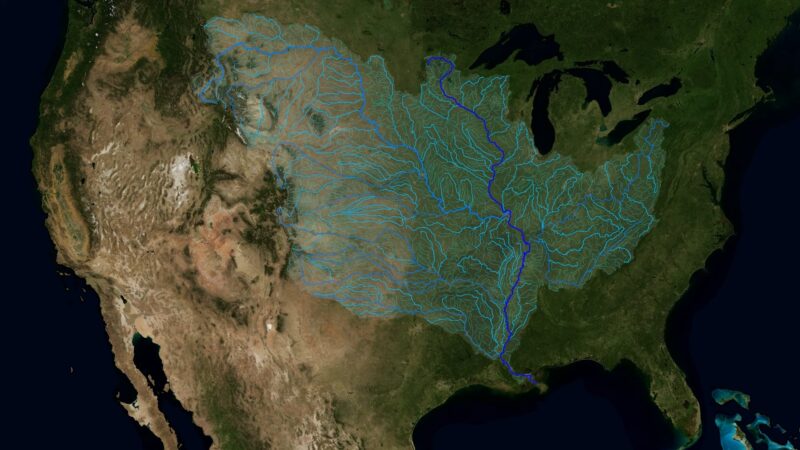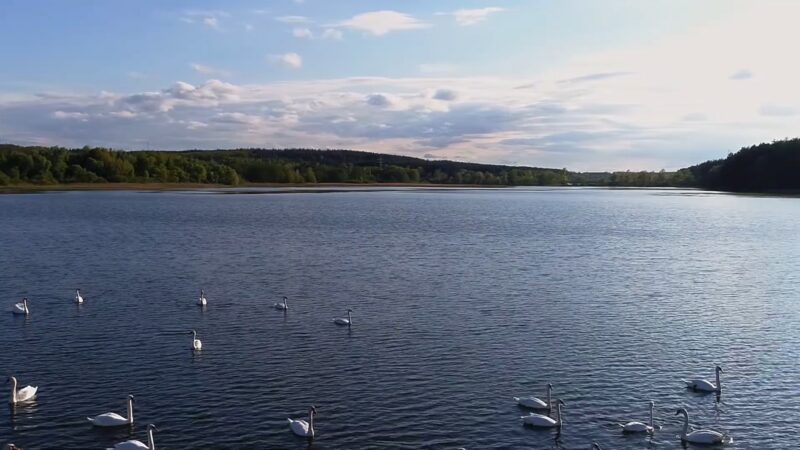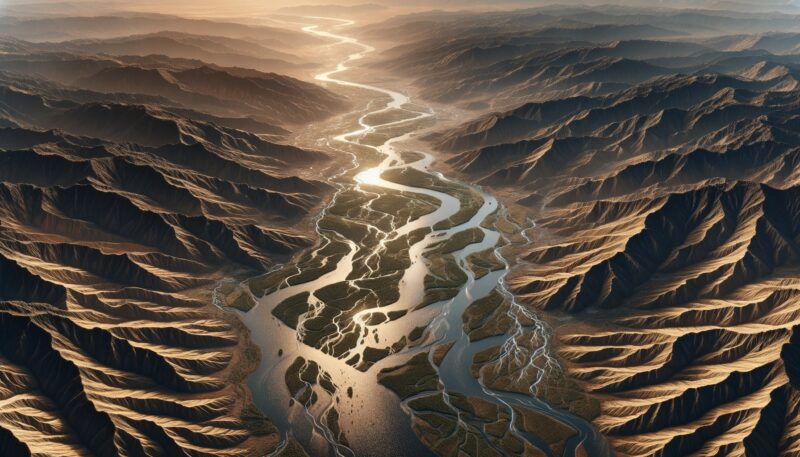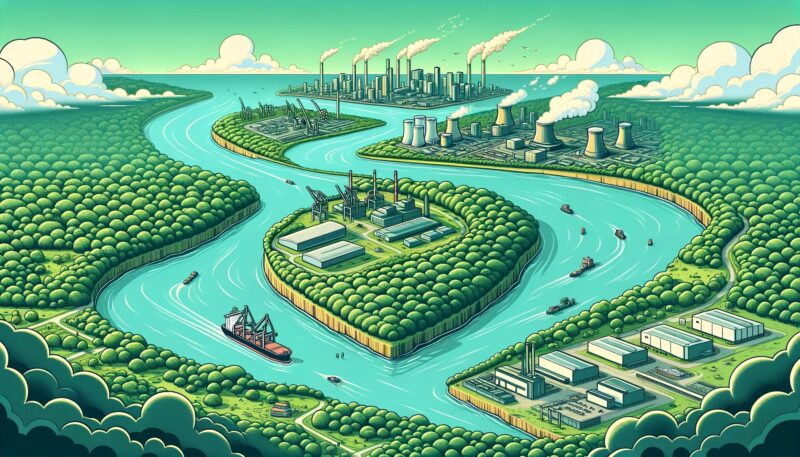Ever noticed those smaller streams that merge into big rivers? Well, they’re not just mini rivers; they’re called tributaries, and they’ve got a huge role in our river ecosystems.
Think of them as the behind-the-scenes stars, adding their own twist of water, dirt, and nutrients to the larger rivers. In this article, we’re going on a fun trip to unravel the mysteries of tributaries. So, let’s get going and splash into the exciting world of these cool little waterways!
In simple terms, a tributary is like a junior river that flows into a senior one, meeting at a spot called the confluence. They come in all sizes, from little brooks to big streams, and they can flow into rivers, lakes, or even oceans.
Oh, and don’t mix them up with distributaries, those are the ones that split off and go their own way from the main river, especially in deltas. While tributaries are busy adding to the river’s flow, distributaries are like river fans, spreading water and goodies out into the area around them.
Key Takeaways
- Tributaries Matter: They’re smaller water bodies that join larger ones, impacting landscapes, ecosystems, and our lives.
- Natural Formation: Erosion, topography, rocks, climate, and vegetation shape tributaries.
- Eco Heroes: They boost river health, provide habitats, and influence biodiversity.
- Hydro Players: Tributaries affect river flow, temperature, and sediment load.
- Human Impact: Activities like dams and pollution can harm tributaries. Sustainable management is key.
- Facing Challenges: Climate change and water demand pose threats. Conservation and education are vital for their future.
Formation and Characteristics

Tributaries are formed through a variety of natural processes. Erosion plays a key role, as water from rainfall or melting snow gathers and flows downhill, carving out small channels that eventually grow into streams and rivers.
The topography of the land, types of rock and soil, climate, and vegetation all influence how and where these watercourses develop. The characteristics of tributaries, such as their gradient, volume of flow, and sediment load, are largely determined by their geographical location and the environment through which they flow.
For instance, tributaries in mountainous areas tend to have steeper gradients and faster flow rates, while those in flatter regions generally flow more slowly and have higher sediment loads.
| Aspect | Description | Details |
|---|---|---|
| Formation Processes | ||
| Erosion | Key in tributary formation | Rainfall or melting snow carves out channels. |
| Topography | Influences tributary development | Determines the path and flow of tributaries. |
| Rock and Soil Types | Affects channel formation and durability | Different rocks and soils lead to varying tributary structures. |
| Climate | Plays a role in water availability and flow | Influences the volume and seasonality of tributary flow. |
| Vegetation | Impacts erosion and water absorption | Vegetation types can slow down or speed up water flow. |
| Characteristics | ||
| Gradient | The slope of the tributary | Steeper in mountains, gentler in flat areas. |
| Volume of Flow | Amount of water flowing in the tributary | Higher in regions with more precipitation or snowmelt. |
| Sediment Load | Amount of sediment carried | Higher in slower-flowing tributaries, especially in flat lands. |
Ecological Significance

Tributaries play a crucial role in the ecology of river systems. They contribute not only water but also nutrients and sediment to the main river, influencing its physical, chemical, and biological characteristics.
This input can affect the river’s biodiversity, the health of its fish populations, and the productivity of its floodplain. In addition, tributaries provide critical habitats for a wide range of aquatic and terrestrial species.
Many fish, for example, depend on tributaries for spawning and as nursery grounds for their young. The diverse environments created by the confluence of tributaries and main rivers often support a rich array of wildlife.
Hydrological Impact

The role of tributaries in the hydrology of a region is substantial. They contribute to the overall discharge of the main river, affecting its flow regime and the extent of its floodplain.
In times of heavy rainfall, tributaries can rapidly increase the volume of water in the main river, potentially leading to flooding. Conversely, during dry periods, the flow from tributaries can be crucial in maintaining the water level and ecological health of the river.
Tributaries also play a role in the recharge of groundwater. As they flow, water can seep into the ground, replenishing aquifers and affecting the groundwater table.
This process is essential for maintaining the balance of the hydrologic cycle, particularly in arid and semi-arid regions.
Human Interactions and Management
Humans have interacted with tributaries for thousands of years, utilizing them for water supply, irrigation, transportation, and energy generation. The management of tributaries and their watersheds is critical for sustaining these uses while also protecting the environment.
In recent decades, the impact of human activities such as dam construction, pollution, and land use changes on tributaries has become a major concern. These activities can alter the flow regime, water quality, and ecological integrity of both tributaries and the main river systems they feed.
Effective management requires understanding the complex interactions within a watershed and balancing the needs of human populations with environmental conservation.
Challenges and Future Directions

The future of tributaries and their associated ecosystems faces several challenges. Climate change is likely to impact precipitation patterns and temperatures, affecting the flow and ecological characteristics of tributaries.
Additionally, increasing human demand for water resources poses a threat to the health and sustainability of these water bodies. Efforts to protect and manage tributaries must take a holistic approach, considering the entire watershed and the interconnectedness of its components.
This includes implementing sustainable water management practices, restoring degraded habitats, and reducing pollution. Public education and involvement are also key to ensuring the long-term health of tributaries and the larger river systems they support.
FAQs
Can a river have more than one tributary?
Yes, a river can have multiple tributaries. Larger rivers often have a network of many tributaries, each contributing water, sediment, and nutrients. The number and size of tributaries a river has depend on factors such as the size of its watershed, the topography, and the climatic conditions of the region.
How do tributaries affect the color and clarity of a river?
Tributaries can significantly influence the color and clarity of a river. For instance, if a tributary carries a high amount of sediment, it can make the river water appear murkier. Conversely, tributaries originating from glacial areas might introduce very clear, blue-tinted water due to the presence of glacial flour (finely ground rock particles).
Are there any famous rivers that are primarily known for their tributaries?
The Amazon River is a good example. It has over 1,100 tributaries, with some, like the Madeira and the Tapajós rivers, being significant rivers in their own right. These tributaries contribute to the Amazon’s status as the largest river in the world by discharge volume.
Do tributaries have an effect on the temperature of a river?
Yes, tributaries can affect the temperature of the river they flow into. If a tributary originates from a cold mountainous region, it can lower the temperature of the river water. Conversely, tributaries flowing through warmer areas can increase the river’s temperature. These temperature changes can impact the river’s ecosystem, particularly affecting species sensitive to temperature variations.
Can the course of a tributary change naturally over time?
Yes, the course of a tributary can change due to natural processes such as erosion, sediment deposition, and tectonic activity. Over time, these changes can lead to the tributary altering its path, forming new channels, or even joining different rivers.
Are there any specific conservation efforts focused on tributaries?
Yes, there are conservation efforts that specifically target tributaries. These include initiatives to restore natural flow regimes, reduce pollution and sedimentation, and protect habitats for aquatic and riparian species. Such efforts are crucial for maintaining the ecological health of both the tributaries and the larger river systems they feed.
Final Words
And there you have it! We’ve journeyed through the ins and outs of tributaries and learned just how crucial these smaller streams are to our big rivers and the environment as a whole.
They’re not just tiny streams, but key players in the ecosystem, supporting a variety of life forms and contributing significantly to the health and well-being of larger water bodies. As we wrap up, it’s clear that these little rivers deserve a lot more credit than they usually get.
So next time you’re out exploring nature and come across a tributary, take a moment to appreciate the important role it plays in the grand scheme of things. Remember, every big river starts with small beginnings!
